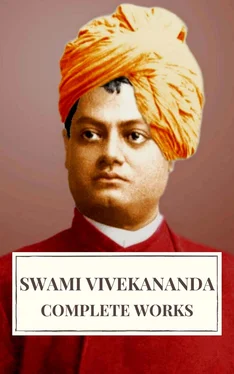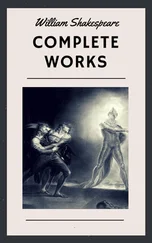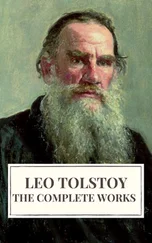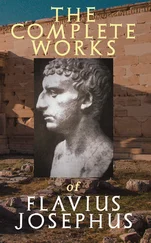Whenever any religion succeeds, it must have economic value. Thousands of similar sects will be struggling for power, but only those who meet the real economic problem will have it. Man is guided by the stomach. He walks and the stomach goes first and the head afterwards. Have you not seen that? It will take ages for the head to go first. By the time a man is sixty years of age, he is called out of [the world]. The whole of life is one delusion, and just when you begin to see things the way they are, you are snatched off. So long as the stomach went first you were all right. When children’s dreams begin to vanish and you begin to look at things the way they are, the head goes. Just when the head goes first, [you go out].
[For] the religion of the Upanishads to be popularised was a hard task. Very little economy is there, but tremendous altruism. ...
The Upanishads had very little kingdom, although they were discovered by kings that held all the royal power in their hands. So the struggle ... began to be fiercer. Its culminating point came two thousand years after, in Buddhism. The seed of Buddhism is here, [in] the ordinary struggle between the king and the priest; and [in the struggle] all religion declined. One wanted to sacrifice religion, the other wanted to cling to the sacrifices, to Vedic gods, etc. Buddhism ... broke the chains of the masses. All castes and creeds alike became equal in a minute. So the great religious ideas in India exist, but have yet to be preached: otherwise they do no good. ...
In every country it is the priest who is conservative, for two reasons — because it is his bread and because he can only move with the people. All priests are not strong. If the people say, “Preach two thousand gods,” the priests will do it. They are the servants of the congregation who pay them. God does not pay them. So blame yourselves before blaming the priests. You can only get the government and the religion and the priesthood you deserve, and no better.
So the great struggle began in India and it comes to one of its culminating points in the Gita. When it was causing fear that all India was going to be broken up between [the] two ... [groups], there rose this man Krishna, and in the Gita he tries to reconcile the ceremony and the philosophy of the priests and the people. Krishna is loved and worshipped in the same way as you do Christ. The difference is only in the age. The Hindus keep the birthday of Krishna as you do Christ’s. Krishna lived five thousand years ago and his life is full of miracles, some of them very similar to those in the life of Christ. The child was born in prison. The father took him away and put him with the shepherds. All children born in that year were ordered to be killed. ... He was killed; that was his fate.
Krishna was a married man. There are thousands of books about him. They do not interest me much. The Hindus are great in telling stories, you see. [If] the Christian missionaries tell one story from their Bible, the Hindus will produce twenty stories. You say the whale swallowed Jonah; the Hindus say someone swallowed an elephant. ... Since I was a child I have heard about Krishna’s life. I take it for granted there must have been a man called Krishna, and his Gita shows he has [left] a wonderful book. I told you, you can understand the character of a man by analysing the fables about him. The fables have the nature [of decorations]. You must find they are all polished and manipulated to fit into the character. For instance, take Buddha. The central idea [is] sacrifice. There are thousands of folklore, but in every case the sacrifice must have been kept up. There are thousands of stories about Lincoln, about some characteristic of that great man. You take all the fables and find the general idea and [know] that that was the central character of the man. You find in Krishna that non-attachment is the central idea. He does not need anything. He does not want anything. He works for work’s sake. “Work for work’s sake. Worship for worship’s sake. Do good because it is good to do good. Ask no more.” That must have been the character of the man. Otherwise these fables could not be brought down to the one idea of non-attachment. The Gita is not his only sermon. ...
He is the most rounded man I know of, wonderfully developed equally in brain and heart and hand. Every moment [of his] is alive with activity, either as a gentleman, warrior, minister, or something else. Great as a gentleman, as a scholar, as a poet. This all-rounded and wonderful activity and combination of brain and heart you see in the Gita and other books. Most wonderful heart, exquisite language, and nothing can approach it anywhere. This tremendous activity of the man — the impression is still there. Five thousand years have passed and he has influenced millions and millions. Just think what an influence this man has over the whole world, whether you know it or not. My regard for him is for his perfect sanity. No cobwebs in that brain, no superstition. He knows the use of everything, and when it is necessary to [assign a place to each], he is there. Those that talk, go everywhere, question about the mystery of the Vedas, etc., they do not know the truth. They are no better than frauds. There is a place in the Vedas [even] for superstition, for ignorance. The whole secret is to find out the proper place for everything.
Then that heart! He is the first man, way before Buddha, to open the door of religion to every caste. That wonderful mind! That tremendously active life! Buddha’s activity was on one plane, the plane of teaching. He could not keep his wife and child and become a teacher at the same time. Krishna preached in the midst of the battlefield. “He who in the midst of intense activity finds himself in the greatest calmness, and in the greatest peace finds intense activity, that is the greatest [Yogi as well as the wisest man].” (Ibid. IV. 18.) It means nothing to this man — the flying of missiles about him. Calm and sedate he goes on discussing the problems of life and death. Each one of the prophets is the best commentary on his own teaching. If you want to know what is meant by the doctrine of the New Testament, you go to Mr. So-and-so. [But] read again and again [the four Gospels and try to understand their import in the light of the wonderful life of the Master as depicted there]. The great men think, and you and I [also] think. But there is a difference. We think and our bodies do not follow. Our actions do not harmonise with our thoughts. Our words have not the power of the words that become Vedas. ... Whatever they think must be accomplished. If they say, “I do this,” the body does it. Perfect obedience. This is the end. You can think yourself God in one minute, but you cannot be [God]. That is the difficulty. They become what they think. We will become [only] by [degrees].
You see, that was about Krishna and his time. In the next lecture we will know more of his book.
This article was recorded by Ida Ansell in shorthand. As, however, Swamiji’s speed was too great for her in her early days, dots are put in the articles to indicate the omissions, while the words within square brackets are added by way of linking up the disconnected parts.
( Delivered in San Francisco, on May 28, 1900 )
The Gitâ requires a little preliminary introduction. The scene is laid on the battlefield of Kurukshetra. There were two branches of the same race fighting for the empire of India about five thousand years ago. The Pândavas had the right, but the Kauravas had the might. The Pandavas were five brothers, and they were living in a forest. Krishna was the friend of the Pandavas. The Kauravas would not grant them as much land as would cover the point of a needle.
The opening scene is the battlefield, and both sides see their relatives and friends — one brother on one side and another on the other side; a grandfather on one side, grandson on the other side. ... When Arjuna sees his own friends and relatives on the other side and knows that he may have to kill them, his heart gives way and he says that he will not fight. Thus begins the Gita.
Читать дальше












